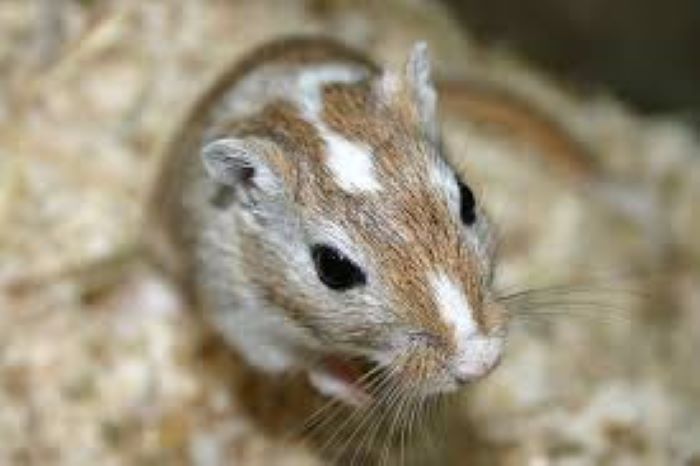Gerbils are social, active little creatures. Like other small furry creatures, they are curious, which can cause complications. Children and those who have to live in limited spaces will enjoy having them as pets.
Gerbils are excellent companions for older children. Despite how easy it is to handle them, they’re more active than other hamsters. Unlike hamsters, they are not nocturnal, which means they can be active at any time of day.
To ensure that your pet gerbil is happy and healthy, observe their washing habits to see if they have changed. A proper grooming routine entails using their tongue to clean their tail, paws, and head.
You can understand their moods from their body language if you have two gerbils. Gerbils greet one another by rubbing their noses and faces together because they can recognize one another by scent and saliva. Regular grooming between two gerbils shows affection and bonding.
If your gerbil jumps up and down, she’s happy to see you. When gerbils scream while being handled and touched, their entire body vibrates.
Curiosity is an essential positive trait. Keep an eye on the following characteristics:
- Standing with the arms at its sides on the hind legs.
- Sniffing the air while surveying the area in front of her.
- Plenty of energy to check her cage and have a look around.
Gerbil burrowing might be mistaken as a sign of anxiety or fear by certain people. Surprisingly, this is a sign of contentment. You may assist your gerbil in building a nest by providing him with shredded newspaper or cardboard.
If you intend to keep gerbils, there are several points you need to know to keep them healthy and happy. We can do many things to make our gerbils happy.
Gerbils are amiable animals in the wild, where they live in large groups or communities. In captivity, the same social conditions must be replicated to thrive.
In the wild, they reside in large groups. Look for two of the same sex who are familiar with each other. Allow lots of space for gerbil groupings to avoid territorial disputes.
Gerbils require a strong cage. Gerbils spend the bulk of their lives in their enclosure. Therefore it must be designed and constructed correctly. If you want to keep your gerbils happy, they’ll require at least 10 gallons of space each.
Some cages have a solid foundation with bars above them for food and water bowls, so they don’t get filled with bedding.
The bedding cannot be thick enough for gerbils to burrow in a typical large cage of bars and a small solid base.
Gerbils are housed in situations where they cannot burrow, develop extreme fear, and may bite. Gerbils rarely bite when kept in proper conditions.
Exercise wheels are an excellent diversion/game for your gerbil. They will adore it, and the activity will assist them in releasing extra energy.
Ensure that your gerbil has plenty of exercise activities. Gerbils, like the majority of rodents, adore exercise wheels. Provide them either a cage ball or a 6 – 8 inch wheel so they may run around as though nothing is preventing them. A clean cage with toys can dramatically improve their pleasure and quality of life.
Gerbils are natural burrowers. They dwell in caves and can dig rather vast tunnels in the wild. Captive gerbils enjoy working most when they can simulate their behavioral patterns.
As a result, extra-deep bedding is required. A minimum depth of 6 inches or more is recommended. It’s even better if you can give them more.
Although gerbils are tidy creatures, their cages should be cleaned once a week. When you have more than two gerbils, the bigger enclosure size may indicate that you do not need to clean it as frequently as this, but if the cage becomes dirty or the bedding gets damp, you would have to clean it.
Rodents prefer to hide, providing them with a comfortable place to cuddle up and burrow. These creatures like to mine in the wild, and it is critical to allow them to simulate that activity in their cage.
Toys like this delicious hideaway are ideal for all gerbils.
Teeth in gerbils grow fast. Their front teeth need to be gnawed on to keep them healthy.
If they do not chew, they quickly reach the stage requiring teeth trimming by a veterinarian. This can become costly and is unpleasant for the gerbil.
Collect the inner tube of toilet paper, kitchen towels, and tape rolls. The majority of gerbils enjoy cardboard tubes as a chew toy. Additionally, pet stores sell thick, pressurized cardboard tubes that last longer and provide an excellent workout for the teeth.
Wood and the “edible tunnels” found at pet stores are also favorites for gnawing by gerbils. Applewood has a pleasant aroma that encourages chewing, and medium-sized branches can also be hollowed out and filled with treats.
Allow your gerbil to roam around your house so that you won’t lose track of them. It lets kids explore and connect with you at home. You can give your gerbils lots of new toys.
Rodents have specialized vets, and you should take them in for regular check-ups. This will assist you in identifying any physical issues that require your attention.
Attending to any bodily concerns can assist you in keeping them well, which will result in their happiness.
Finally, whenever possible, interact with your gerbil. They rush all over their humans, up or down stretched arms, examining necks and clothes, and even up onto heads.
Spending 20 to 30 minutes per day with your gerbil is recommended, and perhaps even that may be insufficient, particularly if they have a friend all day. You’ll need to adapt and pay attention to your gerbil desires and provide them.
Once they’re out of their cage, start training them with seeds. Rewarding positive behavior is always valued, regardless of who or what is involved.
Like a gerbil owner, you must know the symptoms of a healthy pet. Understand your gerbil’s indications and how to treat them.
Gerbils frequently express their moods through their body language. Consider the following favorable indicators:
- Stamina to move around the cage
- Grooming
- The excitement of seeing you jump in the air
- Seated on their hind legs
Gerbils are intelligent creatures that express the majority of their demands nonverbally. Once you’ve figured out how to read their body language, you’ll feel more secure about nurturing and looking for your furry pet.

Dr. Ananya Singh, the expert behind ThePetster.com, is a dedicated veterinarian with over 9 years of experience in animal health and welfare. She holds a Doctor of Veterinary Medicine (DVM) degree. Dr. Singh specializes in comprehensive pet care, preventative health, and holistic wellness. Follow her on Instagram for expert advice and updates.
